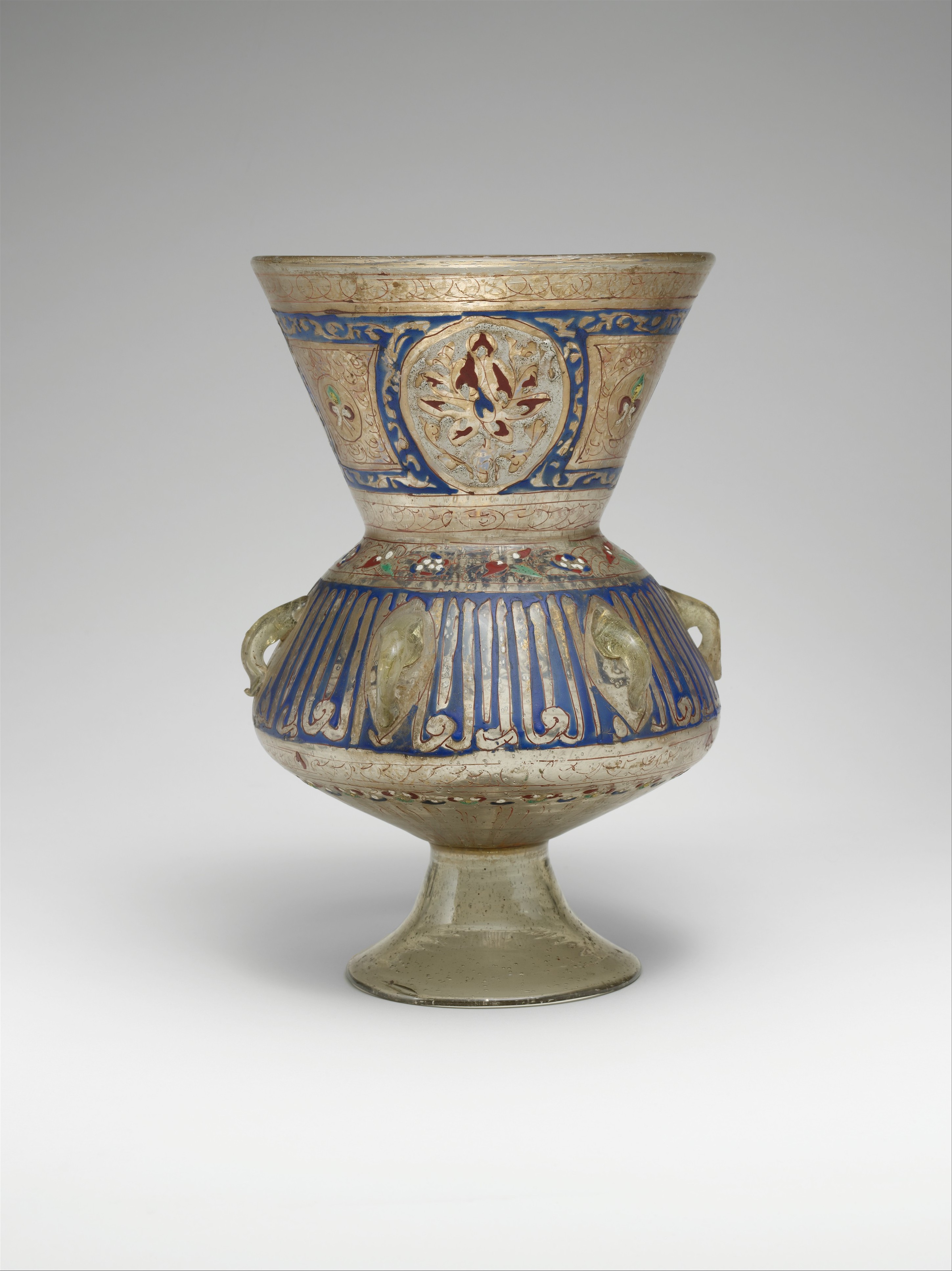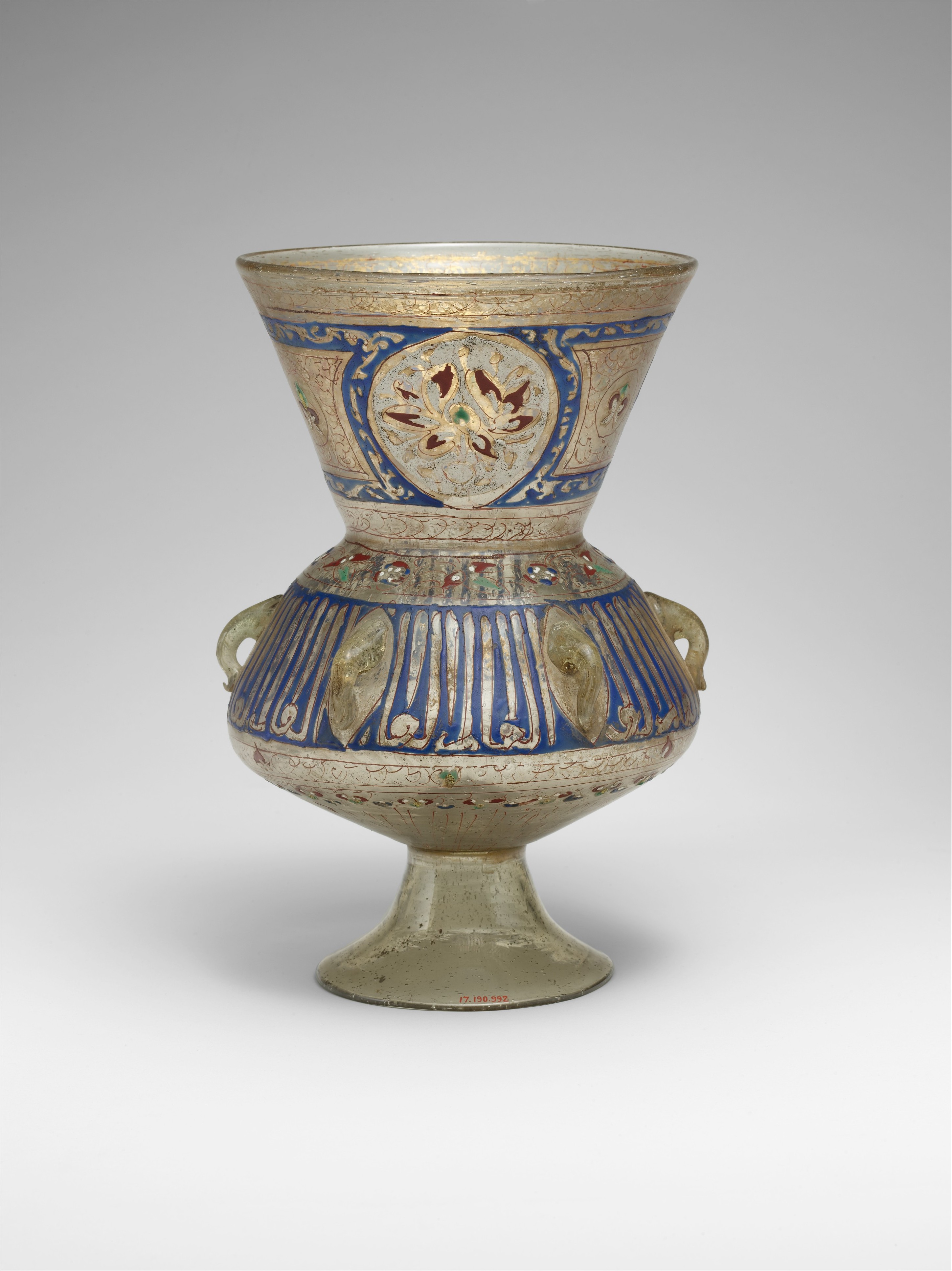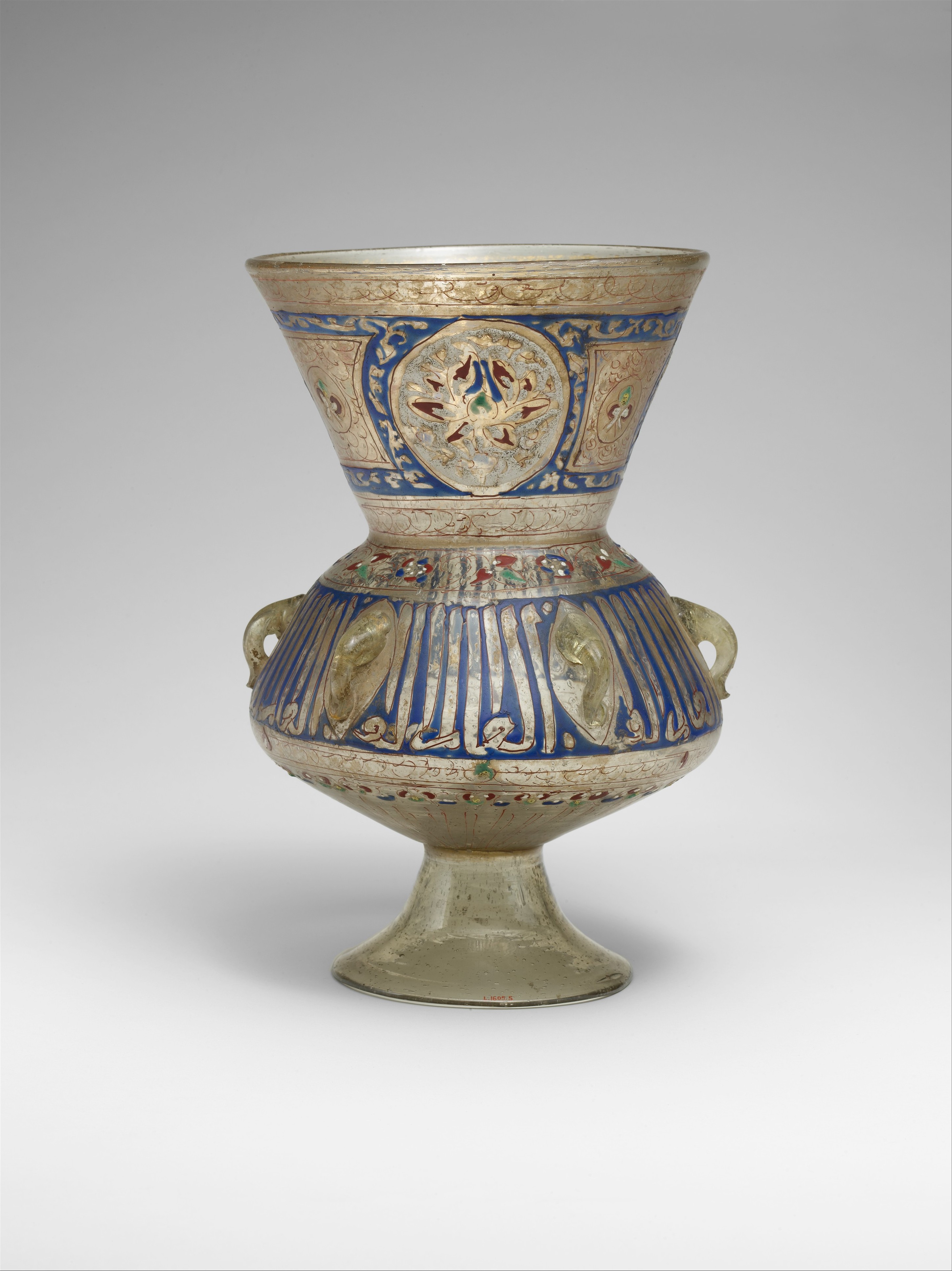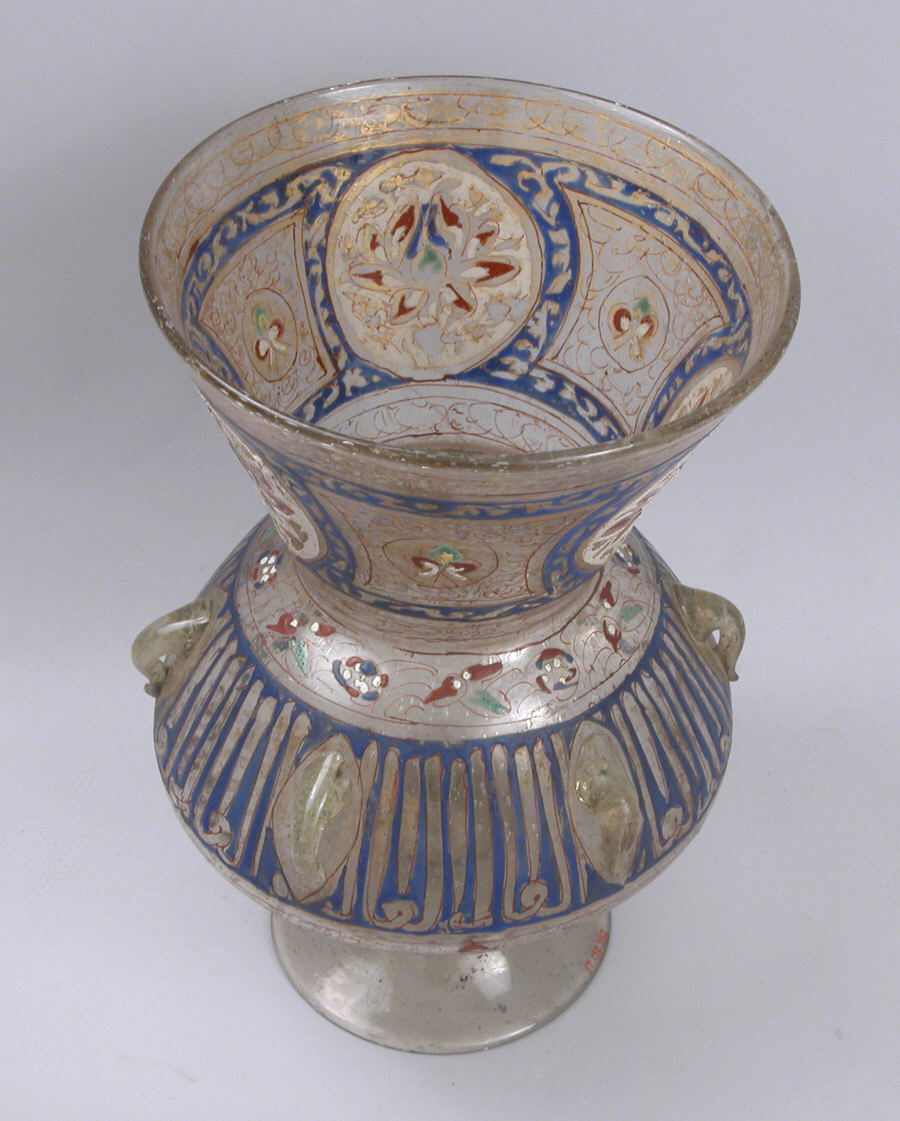Mosque lamp
Not on view
The technique of polychrome enameled glass emerged in the late 12th century, with centers in Syria, Egypt and Northern Mesopotamia. This type of mosque lamp, the somewhat unrefined decoration of which consists of the repetition of the word al-'alim ("the learned") and of the conventional peony design, probably represents objects produced in large number for the market rather than a specific commission. Nonetheless, the market value for enameled glass was certainly high and only affluent individuals could afford it.
Due to rights restrictions, this image cannot be enlarged, viewed at full screen, or downloaded.
This artwork is meant to be viewed from right to left. Scroll left to view more.






